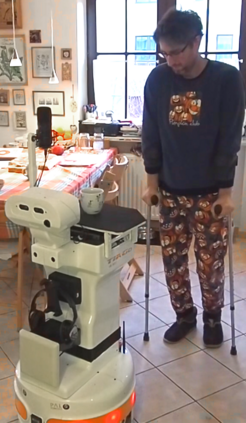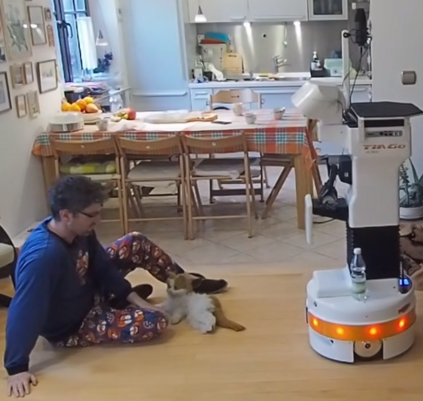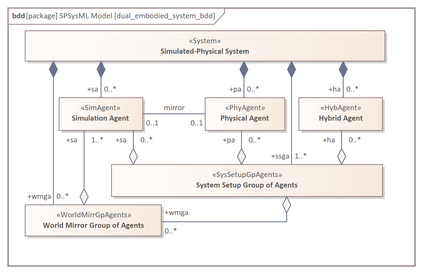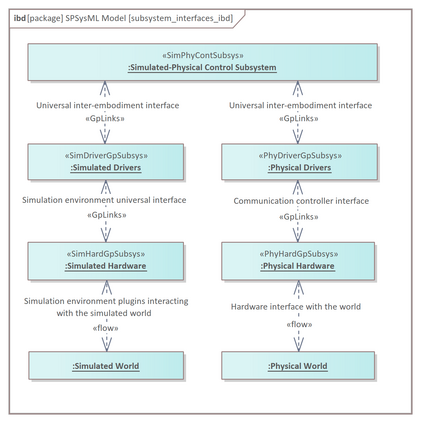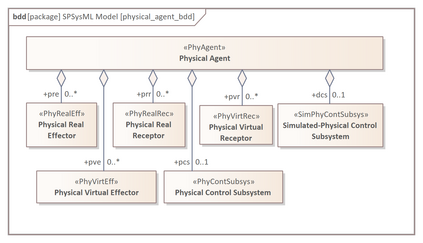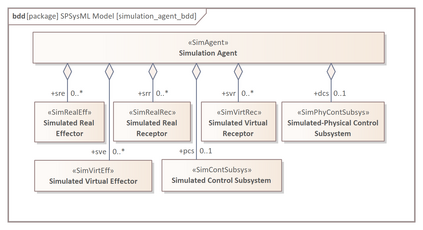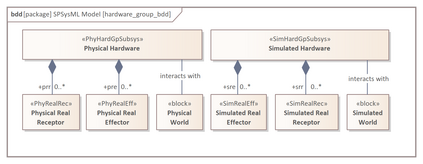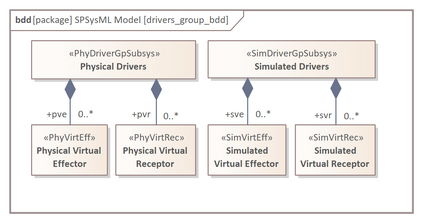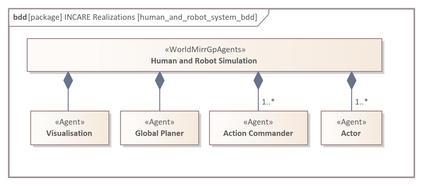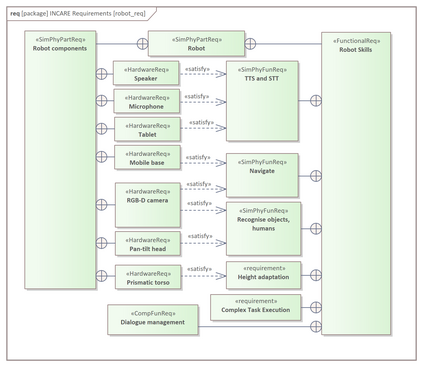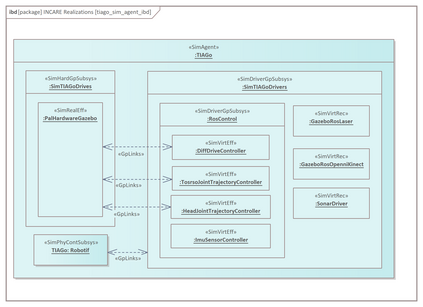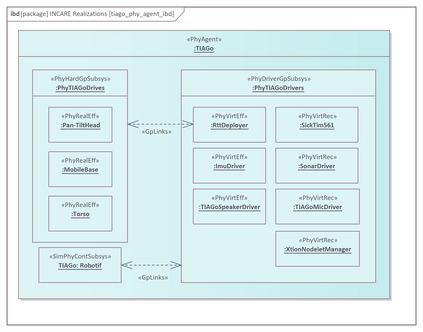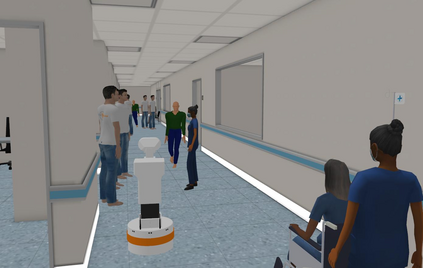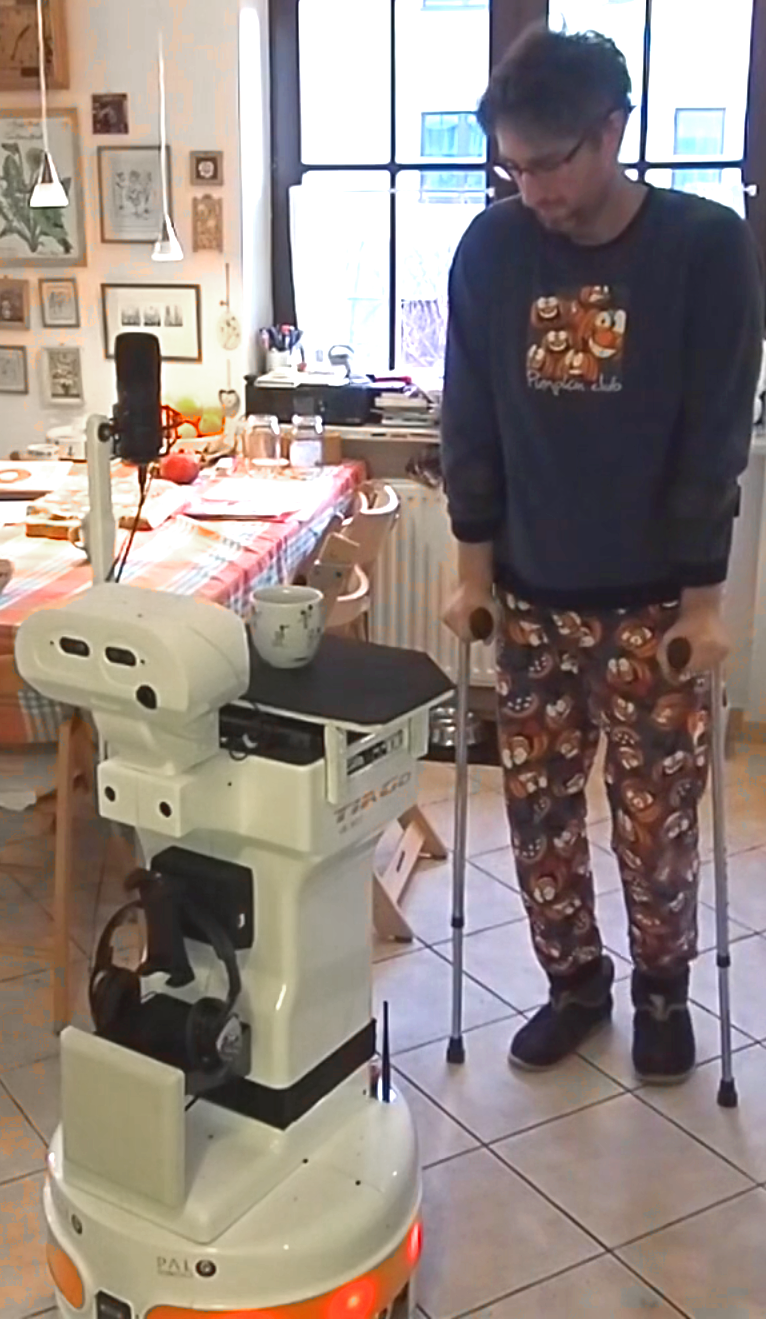Robotic systems are complex cyber-physical systems (CPS) commonly equipped with multiple sensors and effectors. Recent simulation methods enable the Digital Twin (DT) concept realisation. However, DT employment in robotic system development, e.g. in-development testing, is unclear. During the system development, its parts evolve from simulated mockups to physical parts which run software deployed on the actual hardware. Therefore, a design tool and a flexible development procedure ensuring the integrity of the simulated and physical parts are required. We aim to maximise the integration between a CPS's simulated and physical parts in various setups. The better integration, the better simulation-based testing coverage of the physical part (hardware and software). We propose a Domain Specification Language (DSL) based on Systems Modeling Language (SysML) that we refer to as SPSysML (Simulation-Physical System Modeling Language). SPSysML defines the taxonomy of a Simulation-Physical System (SPSys), being a CPS consisting of at least a physical or simulated part. In particular, the simulated ones can be DTs. We propose a SPSys Development Procedure (SPSysDP) that enables the maximisation of the simulation-physical integrity of SPSys by evaluating the proposed factors. SPSysDP is used to develop a complex robotic system for the INCARE project. In subsequent iterations of SPSysDP, the simulation-physical integrity of the system is maximised. As a result, the system model consists of fewer components, and a greater fraction of the system components are shared between various system setups. We implement and test the system with popular frameworks, Robot Operating System (ROS) and Gazebo simulator. SPSysML with SPSysDP enables the design of SPSys (including DT and CPS), multi-setup system development featuring maximised integrity between simulation and physical parts in its setups.
翻译:机器人系统是具有多个传感器和效应器的复杂的模拟-物理系统(CPS)。最近的模拟方法使得数字孪生(DT)概念变为现实。然而,机器人系统开发中DT的使用,例如在开发测试中,尚不清楚。在系统开发过程中,其部件从模拟模型逐步演化到运行在实际硬件上的软件上的物理部件。因此,需要设计工具和灵活的开发过程,以确保模拟和物理部分的完整性。我们旨在在各种设置中最大化CPS的模拟和物理部分之间的集成。集成越好,物理部分(硬件和软件)的基于模拟的测试覆盖率就越好。我们提出了一种基于系统建模语言(SysML)的领域规范语言(DSL),称为SPSysML(模拟-物理系统建模语言)。SPSysML定义了模拟-物理系统(SPSys)的分类法,它是至少包括物理或模拟部分的CPS。特别是,模拟部分可以是DT。我们提出了一种SPSys开发过程(SPSysDP),通过评估所提出的因素来实现最大化SPSys的模拟-物理完整性。SPSysDP用于开发INCARE项目的复杂机器人系统。在SPSysDP的后续迭代中,最大化了系统的模拟-物理完整性。因此,系统模型包含更少的组件,并且各种系统设置之间共享更大的系统组件比例。我们使用流行的框架机器人操作系统(ROS)和Gazebo模拟器实现和测试了该系统。SPSysML与SPSysDP使得可以设计包括DT和CPS的SPSys,多种设置的系统开发,带有最大化其设置中的模拟和物理部分之间完整性的特征。

